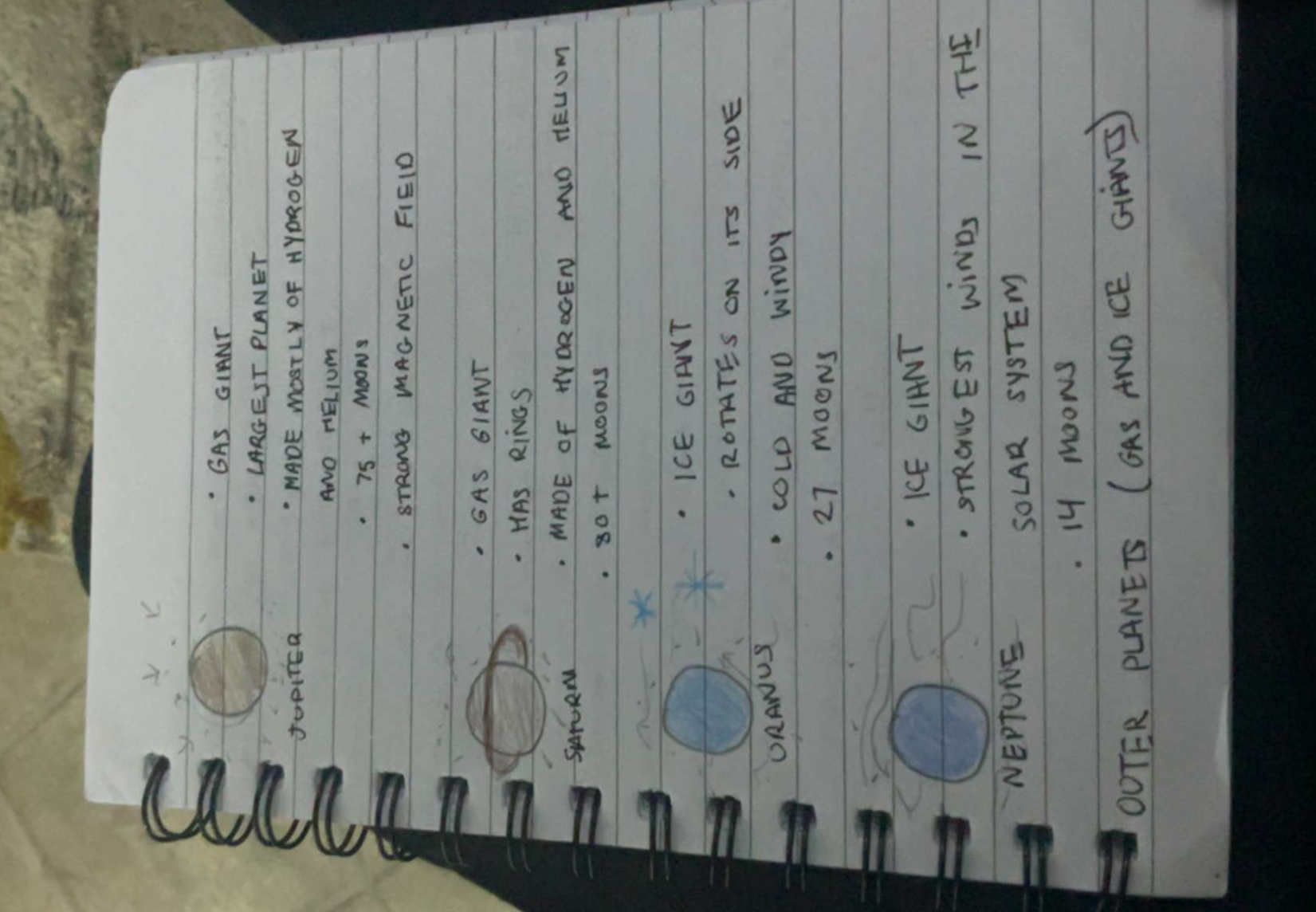physics planets


Orbits happen because of a balance between gravity and motion. The Sun’s gravity pulls planets inward, while their sideways speed keeps them from falling in. If this balance is perfect, the orbit is circular (like a hula hoop). But most orbits are elliptical (stretched ovals) because planets move a little too fast or slow for a perfect circle. In elliptical orbits, planets speed up when close to the Sun (like a skateboarder zooming at the bottom of a ramp) and slow down when far away (like a swing pausing at the top). Gravity always pulls them back, so they keep looping forever! Comets have super-stretched elliptical orbits, while Earth’s is almost circular. It’s all about gravity and speed playing tug-of-war in space! 🚀
Earth’s tilted axis (like a leaning spinning top!) makes seasons and changes sunlight:
Summer Solstice (Hot! ☀):
Your part of Earth tilts toward the Sun (like leaning into a campfire).
Sunlight hits directly (not spread out) = warmer!
Longest day of the year.
Winter Solstice (Cold! ❄):
Your part of Earth tilts away from the Sun (like leaning back from a fire).
Sunlight hits at a slant (super spread out) = weaker & colder.
Shortest day of the year.
Equinox (Equal! ⚖):
Earth’s tilt is sideways to the Sun (not toward or away).
Day and night are exactly 12 hours each.
Happens in spring & autumn.